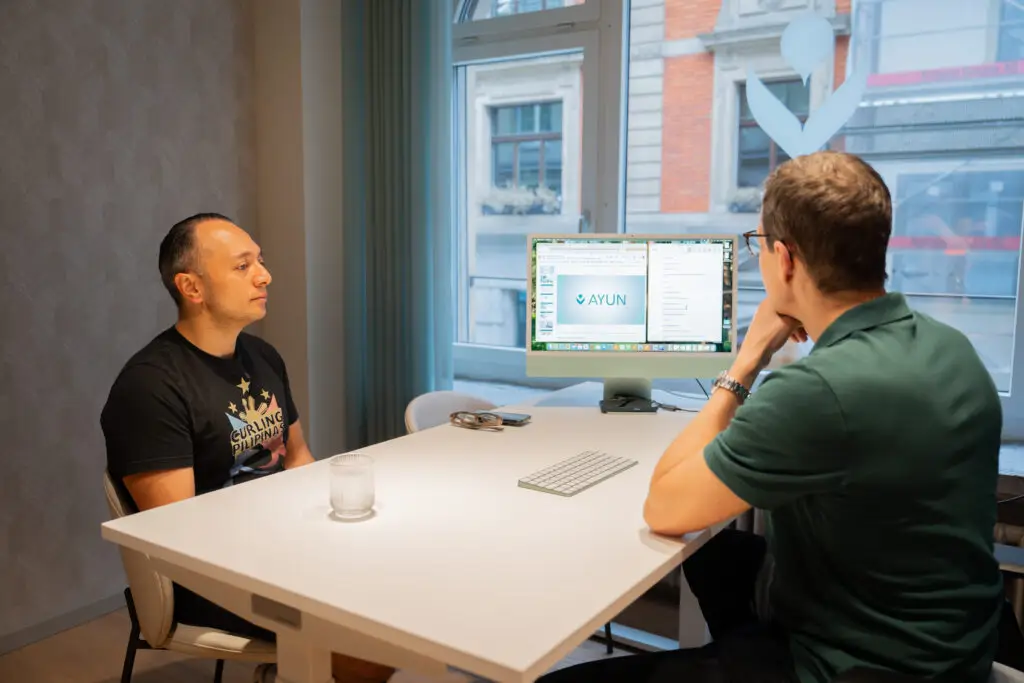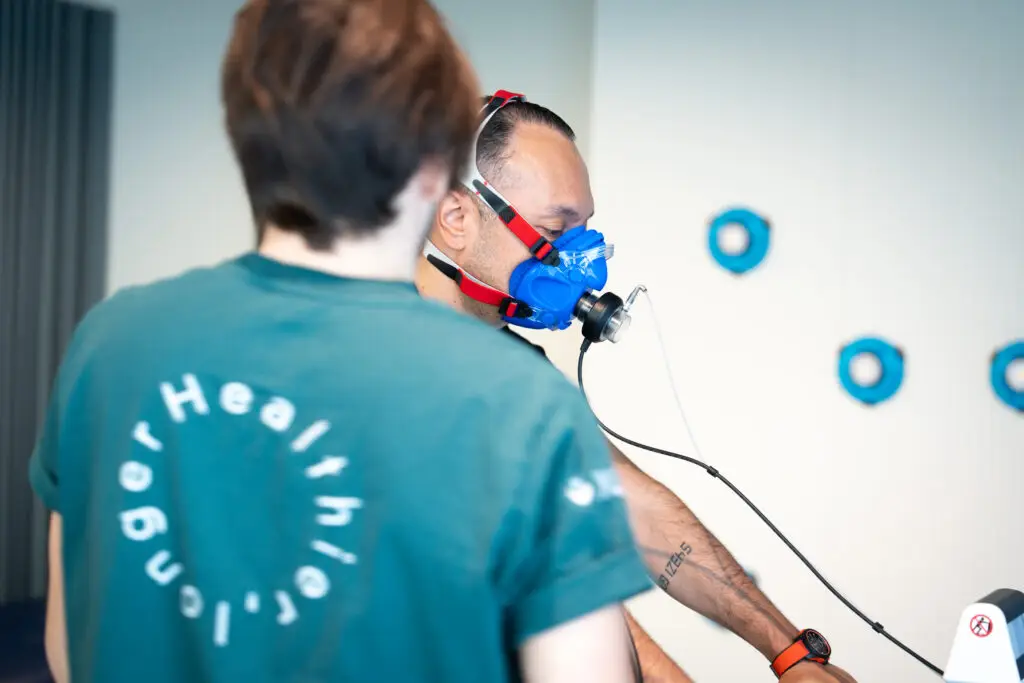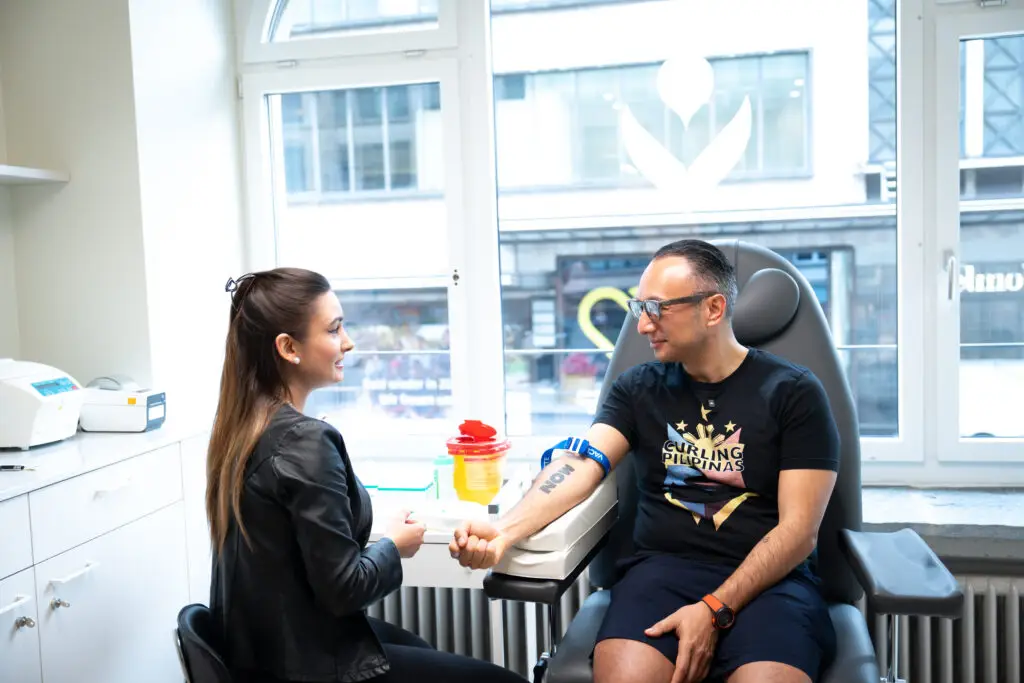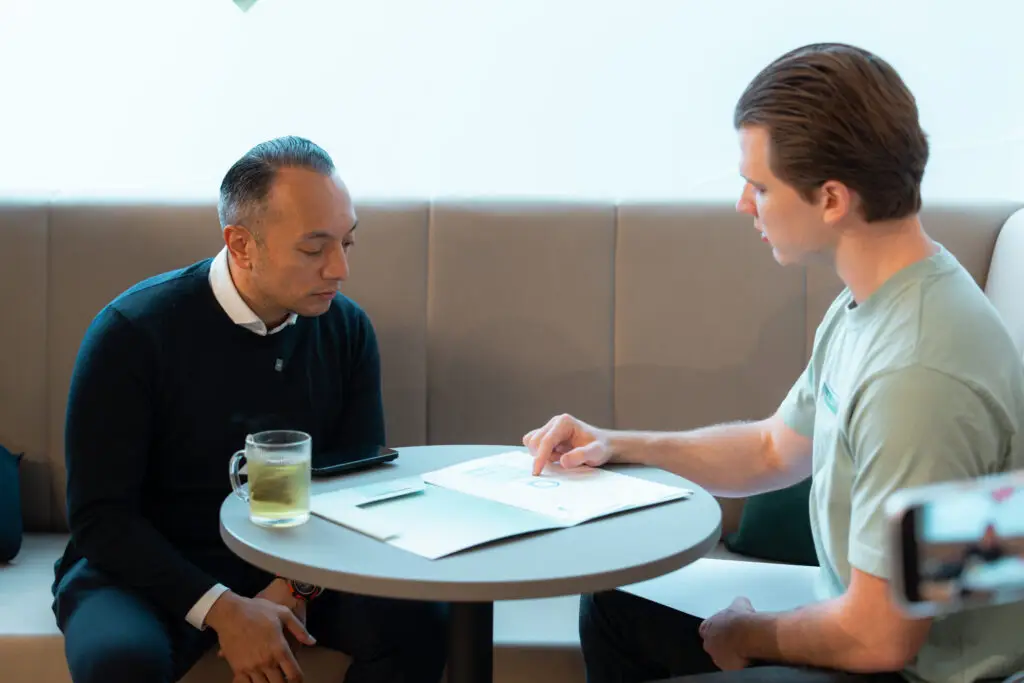Ready for the Olympics? Part 1: Alan Frei’s Longevity Check-up

Alan dreams of participating in the 2026 Winter Olympics. The catch? He has spent far more time in business meetings and office chairs than on running tracks or ice rinks. Can he still make it? A key element on his journey is the comprehensive health check-up he completed at the Longevity walk-in clinic AYUN in Zurich. Read on to discover how Alan had his body thoroughly tested by medical experts.
When Alan Frei stepped on the scale after selling his company Amorana, it showed 102 kilograms at a height of 1.73 meters. This translates to a BMI of 34.1, which is already in the obese range according to the WHO scale – not an ideal starting point for someone aspiring to become an Olympian. But Alan is determined to do whatever it takes to train his body to compete with the world’s top athletes in the sport of curling.
With targeted goals such as dieting down to a bodyweight of 74 kilograms, improving his metabolism, and boosting his cardiovascular fitness, Alan wants to maximize his Olympic chances. The Longevity Check-up at AYUN is designed to give him a detailed overview of his current state of health. The results will serve as a data-driven foundation for his upcoming training.

150 Data Points: Alan’s Comprehensive Health Check
Right after a warm welcome, we start gathering data in AYUN’s relaxed yet professional clinic atmosphere. Alan fills out several questionnaires about his medical history, and his personal physician explains what he can expect today.
The Longevity Check-up includes a range of tests and analyses using state-of-the-art medical technologies, delivering over 150 data points that create a holistic picture of Alan’s health. These insights reveal his personal strengths and weaknesses and will serve as a basis for optimizing both his training and lifestyle. Beyond that, the findings also help him shape a healthier, more fulfilling life in the long-term.

From Bloodwork to DEXA Scan: The Medical Component
To start with, Alan goes for a blood draw. The analysis will provide Alan with key insights into numerous biomarkers related to heart health, inflammation levels, metabolic function, immune system performance, and nutrient status. Genetic testing is also part of the blood analysis, so that possible risk factors and other genetic “obstacles” can be identified. With this information, Alan can adjust his diet to ensure that genetic restrictions in the intake of certain nutrients do not affect his preparation.
Next is a resting ECG. This test is necessary to rule out serious heart defects or arrhythmias before the exercise test. Especially if you are a less trained person with such ambitious sporting goals as Alan, it is essential to get the medical “go” with regard to your heart health.
Alan’s body composition is then analyzed with a DEXA scan. Lying on a scanner table, he’s examined using low-dose X-rays that determine his fat percentage, bone density, and muscle mass. Immediately after the scan, he gets a first glimpse of his results on the screen. The detailed results will follow later as part of his full evaluation.

Strength, Endurance, and Mobility: The Performance Test
After the relaxed medical part of the check-up, it’s time for Alan to show what kind of athletic performance he can deliver. The range of motion tests utilize specialized equipment to measure the mobility of Alan’s hips and shoulders. In curling in particular, mobility in the hips is crucial to glide across the ice smoothly.
This is followed by various strength tests. His grip strength is measured with a dynamometer – which is considered a good indicator of general physical strength. Additional tests assess strength in his arms and legs – both important factors for stability and power as a future Winter Olympian.
Slipping on the ice is not an option. In balance and reaction tests, Alan proves how fast he is and how steady his balance is. These results will provide valuable guidance for planning his training sessions.
Finally, Alan has to give it his all. In the CPET (cardio-pulmonary-exercise-test), he pedals hard on an ergometer while his heart rate and oxygen uptake are measured. This test pushes him to his physical limits and determines how efficiently his body can use oxygen. This is not only important for Alan’s current fitness goals, but also for his long-term health.
Initial Results: Alan is Fit – But There’s Room for Improvement
After completing the extensive Longevity Check-up, Alan receives a preliminary overview of his results from the expert team. His own conclusion after nearly five hours of testing: the results are decent – but he still has a long way to go if he wants to compete at the Winter Olympics. Over the next few weeks, he will receive the detailed results of his tests and discuss them in detail with his doctor, nutritionist and sports scientist. He will then have a clear picture of what he needs to work on over the next few months to increase his chances of competing on the ice.

More articles

Why a Seasonal HBOT Reset Week can sustain brain health, energy, and cellular repair
Do the benefits last forever, or should HBOT be repeated?
The honest answer is that while the initial protocol drives deep biological changes, life stressors, aging, illness, and metabolic pressure accumulate over time. This is why many clinics and researchers now recommend a Seasonal Reset Week - a short, focused series of HBOT sessions performed every 6–12 months - to maintain and reinforce the long-term effects.
This article explains why this approach makes biological sense, how it aligns with published HBOT science, and what a seasonal reset can realistically achieve.

Red Light Masks: A Small Guide
Red light therapy is getting more and more popular, but not all devices live up to their promises. The truth is, many masks don’t meet the standards needed to be effective and some may even do more harm than good. To help you make an informed choice, we’ve put together a short guide with the most important facts.

Ready for the Olympics? Part 1: Alan Frei’s Longevity Check-up
Alan dreams of participating in the 2026 Winter Olympics. The catch? He has spent far more time in business meetings and office chairs than on running tracks or ice rinks. Can he still make it? A key element on his journey is the comprehensive health check-up he completed at the Longevity walk-in clinic AYUN in Zurich. Read on to discover how Alan had his body thoroughly tested by medical experts.







